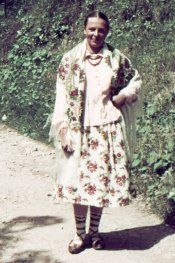Hello, I'm a young amateur photographer who has been shooting, developing and printing on black and white film since I started pursuing photography. For a variety of reasons I prefer black and white and I'll mostly keep with it, but I am interested in experimenting with colour. In my old family albums, and in colour movies from my country in that era, it seems that Agfacolor was used, which gives the colors a very unique look. I would like to be able to replicate this today, I know that Agfa is no longer around and even if they were they switched to using Kodak's colour process many years ago, so the film used to make those photos and movies would be 50 years expired if I could find it, but there is a way to create a similar effect. Below is a still from Die goldene Stadt, which was a film that was shot in Agfacolor, to give an idea of what I mean.

Thank you for your help and assistance!
Thank you for your help and assistance!












